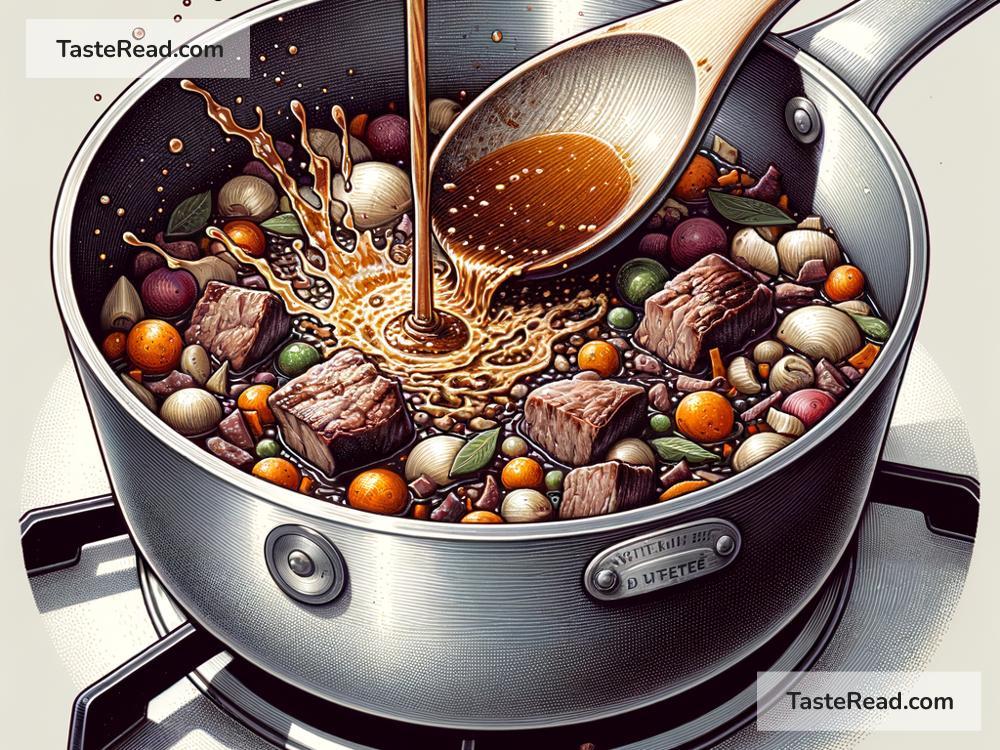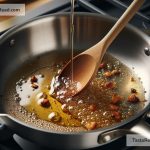How to Properly Deglaze a Pan for Rich and Flavorful Sauces
Cooking is an art form, blending flavors, techniques, and ingredients to create dishes that delight the senses. One of the simpler, yet profoundly impactful cooking techniques is deglazing. This method not only cleans your pan but also adds a depth of flavor to sauces that is hard to achieve through any other method. If you’re looking to take your homemade sauces to the next level, understanding how to properly deglaze a pan is essential.
What is Deglazing?
Deglazing might sound fancy, but it’s just a simple cooking technique used to make sauces. It involves adding liquid to a hot pan to lift the browned bits stuck to the bottom after sautéing or searing food. These browned bits, or fond, are packed with flavor and are the secret ingredient to making your sauces more flavorful.
Why Should You Deglaze?
Apart from creating rich and delicious sauces, deglazing has a practical side too—it makes cleaning pans a breeze! By lifting the brown bits, you’ll leave your pan nearly clean, saving you time and elbow grease. Moreover, it’s a waste to let all that built-up flavor simply wash away; deglazing allows you to utilize every bit of flavor from your cooking.
Choosing the Right Liquid
Deglazing can be done with just about any liquid, but your choice will affect the flavor of your sauce:
- Water: The simplest deglazer, but it doesn’t add much flavor. Best when you want the taste of your fond to take center stage.
- Stock/Broth: Chicken, beef, or vegetable stock adds a rich, savory background that enhances many dishes.
- Wine: White or red wine can add a complex acidity to your sauce. Remember to cook it down to mellow the alcohol flavor.
- Vinegar: For a tangy kick, a splash of vinegar works wonders, especially balsamic or sherry vinegar.
- Juices: Citrus or apple juice can add a sweet and tangy element that complements pork or chicken well.
Step-by-Step Guide to Deglazing
-
Cook Your Main Ingredient: First, cook your meat, vegetables, or whatever else you’re preparing in the pan. Once done, remove it and set aside, leaving the brown bits behind.
-
Remove Excess Fat: Depending on what you cooked, there might be a fair amount of fat left. Drain off any excess, but leave a little to help carry the flavors.
-
Heat the Pan: Turn the heat up to medium-high. The pan should be hot, but not smoking, when you add your liquid.
-
Add the Liquid: Pour in your chosen liquid—wine, stock, water, or other options. Be ready; it might steam and sputter.
-
Scrape the Brown Bits: Use a wooden spoon or spatula to gently scrape the bottom of the pan. These bits will dissolve into the liquid, creating your sauce’s base flavor.
-
Reduce the Liquid: Allow the liquid to simmer and reduce. This concentrates the flavors, making for a more delicious sauce.
-
Finish the Sauce: Once it’s reduced by about half, you can decide to finish your sauce with butter for richness or add herbs, salt, and pepper for extra flavor.
-
Combine: Finally, add any meat or vegetables back into the pan to coat them in the sauce, or pour the sauce over them just before serving.
Tips for Successful Deglazing
- Use the Right Pan: Avoid non-stick pans, as they don’t produce much fond. Stainless steel or cast iron pans are ideal.
- Be Patient: Give the liquid time to work its magic, scraping gently to avoid damaging the pan.
- Balance the Flavors: Taste your sauce as it reduces and adjust the seasonings as needed. If it’s too acidic, a pinch of sugar can help balance it out.
Conclusion
Deglazing is a simple yet transformative technique that can elevate your home-cooked meals. By understanding how to properly deglaze a pan, you unlock the full potential of your ingredients, turning simple dishes into gourmet meals. Whether you’re cooking for yourself, family, or friends, incorporating this method into your cooking will undoubtedly impress. Grab your pan, choose your liquid, and start deglazing your way to richer, more flavorful sauces.


